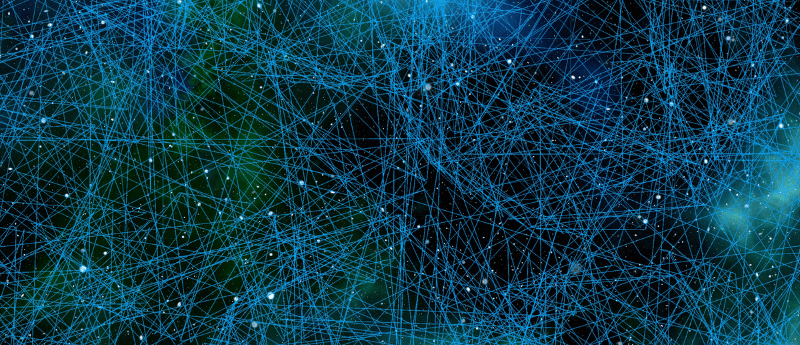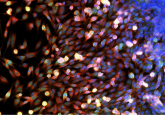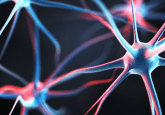Bridging neurobiology and artificial intelligence with Kanaka Rajan

 For International Women’s Day 2023, we interviewed Kanaka Rajan, Computational Neuroscientist and Associate Professor at the Friedman Brain Institute at the Icahn School of Medicine at Mount Sinai in New York (NY, USA). Kanaka discusses her work bridging neurobiology and artificial intelligence, using comic strips to communicate her work, as well as her advice to her younger self.
For International Women’s Day 2023, we interviewed Kanaka Rajan, Computational Neuroscientist and Associate Professor at the Friedman Brain Institute at the Icahn School of Medicine at Mount Sinai in New York (NY, USA). Kanaka discusses her work bridging neurobiology and artificial intelligence, using comic strips to communicate her work, as well as her advice to her younger self.
Please tell us about yourself and how you got to where you are today.
I came to neuroscience circuitously. At first, I followed a typical trajectory of a young student in India, studying math, physics and engineering. My interest in neuroscience wasn’t piqued until after my undergraduate degree. I took a summer research internship position at the National Institute of Mental Health in Bangalore (India), where I found myself immersed in the discussions and research of mental illnesses. I was thrilled by the novelty of this new environment, but I also felt a touch of familiarity. You see, my grandmother helped raise me and also suffered from schizophrenia. Neuroscience research sparked a familiar connection to her lived experiences, which was both comforting and incredibly motivating.
Following my internship, I approached a fork in the road and ultimately decided to take a leap of faith to study neuroscience in graduate school. This path was completely uncharted territory, but I was – and remain – determined to make a difference in brain health for the benefit of those who live with devastating mental illnesses. Equipped with tools from the physical sciences and the perspectives of my youth, combined with my doctoral and postdoctoral training in neuroscience, I was fortunate to have the opportunity to pick a problem of my choosing within the realm of biology and investigate it with a computational lens. This is what has brought me to the research I do today.
Could you provide us with an overview of your research?
I lead a computational neuroscience lab where we bring together the fields of brain research and artificial intelligence/machine learning to figure out how the brain works. We use mathematical and computational models based on data collected from neuroscience experiments to design artificial systems that can perform realistic behaviors using only the machinery the biological nervous system has access to (i.e., neurons and synapses operating at a fast timescale). We build such systems, and then we ‘reverse engineer’ them to reveal the operating principles of the real brain.
More specifically, I build theories grounded in the question of how key cognitive processes such as learning, remembering and deciding – which unfold over minutes, hours, days and even years – are accomplished by the rapid, cooperative activity of neurons and synapses in the brain. Working at the interface of neural network theory, AI and experimental data analysis, I theorize how neural circuits bridge this gap in time scales to produce adaptive behavior. My models use the properties of synapses and neurons, which are powerful enough to extend beyond a single experiment, task or brain area. They reveal unexpected ‘design principles’ of the biological brain, particularly the mechanisms responsible for producing or mediating key time-varying behaviors, which are inaccessible from measurements and may be conserved or uniquely divergent across different species.
You use comic strips to communicate your research to both expert and lay audiences. How did this come about, and why is this style of communication so useful for communicating your research?
Drawing is a hobby of mine. Mostly landscapes and still forms, but it makes me want to combine science and art in meaningful and authentic ways. In my research, I find that sketching ideas – putting abstract ideas into physical form – helps me both consolidate and communicate them. Of course, we know that graphical interpretations can help us better understand complex scientific concepts, and taking this one step further, comics in particular, are an effective method of science communication due to the format’s ability to engage with readers who may have lower scientific literacy.
Neuroscience as a field is particularly amenable to visual communication. Art can depict brain anatomy and neural networks as well as their behavioral effects to bridge different levels of understanding, and it grounds abstract concepts in the real world. For example, my team uses recurrent neural networks (RNNs) to build artificial, lego-like computational models of the brain. Once built, we can take them apart (i.e., reverse engineer them) to uncover how the real brain works. We have used comics to show how these ‘lego brains’ are built out of smaller building blocks, how they can be used across different nervous systems, and how they have been used to better understand neural networks. Comics challenge us to use smaller pieces of information in a story-like format, which can increase accessibility for and understanding in those without specialized backgrounds.
What resources/networks have you found useful in your career, particularly as a woman in science?
Computational neuroscience is a male-dominated field. As both a woman and a minority, I know all too well how hard the path can be, and it’s important for me to make that path easier for others – to create the network and resources that I wish had been available to me during my training.
Recently I’ve been organizing and hosting a women’s group for theorists in the greater New York City (NY, USA) area. We call ourselves, humorously, ‘WTF’, which stands for ‘Women on Two Floors’ because, at Columbia (NY, USA), where I did my doctoral training, the theory center is located on the 5th and 6th floors of that building. We have ~35 members and have been meeting monthly since February 2021. We have dinner, discuss our work, give advice and offer support. It’s a really great group, and I think we all find the opportunity for community, sharing and connection valuable.
Shoutout anyone who has inspired or helped you along the way, or any early career researcher ‘ones to watch’
My biggest inspiration is Eve Marder (Brandeis University; MA, USA), known for her work on small neuronal networks, and she changed my life. Eve took a chance on me as a rotation graduate student and taught me several valuable lessons that continue to guide my scientific practice.
She taught me adaptation. In her lab, I was able to perform delicate dissections, but I struggled to design the experiments. Eve helped me see how my impatience and ‘deficiency’ in experimental design could be adapted for computational approaches and that my need to know answers immediately lends itself to the iterative process of modeling.
She also taught me simplicity. Eve’s research looks at the simplest version of a problem. The Rajan Lab uses a similar approach. We study small nervous systems (e.g., zebrafish, fruit flies, mice) and scale the principles and mechanisms learned in them to larger brains where we may not have the same degree of access (e.g., humans) – allowing us to uncover commonalities and divergences across species.
Advice to your younger self?
A number of years ago now, Kafui Dzirasa, a neuroscience professor at Duke University (NC, USA), tweeted: “Out work them, out hustle them, outlast them.” I think about this quote a lot, particularly during times when I feel like I am not performing at my highest level or achieving the research or career milestones at the speed at which I anticipated. While it sounds harsh, I find it really inspiring because it levels the playing field, if you work hard, you will get there. I wish I had adopted this mentality sooner in my career. Don’t obsess over the small stuff or the inconsequential failures because if you keep working and maintain the faith, you will get there.
I also think Dzirasa’s mantra gives us grace to rest – which is my second piece of advice. To outwork, you need to find time to rest, relax and rejuvenate. It is impossible to outlast if you are working 24/7. I often have spurts of intense work, but that pace is for sprinting, not marathoning. My younger self was all about sprinting, and with sprinting came burnout. It’s not sustainable. It’s funny because I am a runner, but it took effort and a change in mindset to translate this knowledge from running to other aspects of life, including my career.
You might also like:




